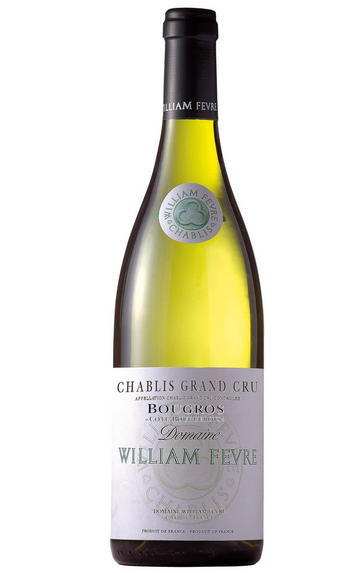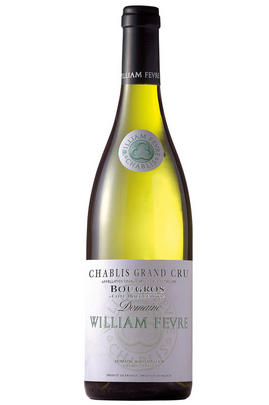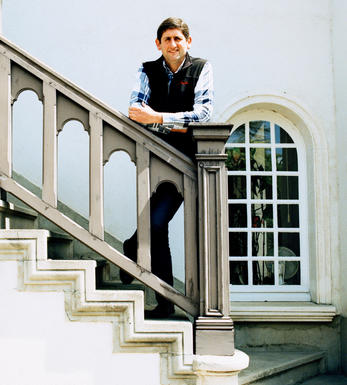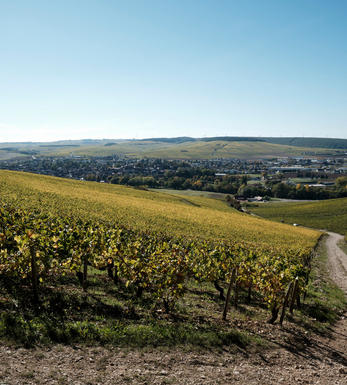
2009 Chablis, Bougros, Côte Bouguerots, Grand Cru, Domaine William Fèvre, Burgundy

Critics reviews
(Allen Meadows, burghound.com, Oct 2010)
Antonio Galloni - 31/08/2011
About this WINE

Domaine William Fevre, Chablis
William Fèvre is one of Chablis’ greatest wine domaines, developed by the eponymous William Fèvre between 1957 and his retirement in 1998 when he sold to the Champagne House Joseph Henriot. William Fèvre began with just 7 hectares and had soon increased this to 48ha, planting widely in the best of the 1ers and grands crus where the vineyards had fallen by the wayside. However the Fèvre penchant for new oak was not to everybody’s taste.
Since the Henriot purchase the wines are made by the talented Didier Séguier who had previously been with the Bouchard team in Beaune. The domaine wines include 12 hectares of premier cru vineyards and no less than 16 hectares of grand crus.The whole crop of their domaine wines, straight Chablis included, is harvested by hand, the grands crus in small ‘cagettes’, with a sorting table back at the winery to ensure the quality of the raw material.
The 1er cru wines are vinified in 40-50% oak, the grands crus receiving 70-80%, but without using new wood – instead the domaine receives a plentiful supply of one year old barrels from Maison Bouchard, and the average age of wood in the cellars is 5 years old. The barrel and vat components are blended together after four to six months, for bottling before the end of the year.
In 1991 he joined forces with the Chilean producer Victor Pino and Vina William Fèvre was established in the heart of the Maipo Valley just outside Santiago.

Chablis Grand Cru
These are the biggest, richest and most complex Chablis, which cover a total of 100 hectares – just two percent of the appellation. At their best, they can match the quality of a Grand Cru Chardonnay from the Côte d’Or, yet often at half the price.
They may lack their southern neighbour’s opulence, but they share the latter’s intensity and have a nervy minerality that set them apart. Inexpressive in youth, they should ideally be aged for 10 years, and can mature for up to 30 years. Styles vary according to producer, with some maturing and fermenting in stainless steel while others use barrels, sometimes even new oak.
All seven Grands Crus are grouped together on a single south-west-facing hill just north of the town. La Moutonne is an unofficial eighth Grand Cru straddling Les Preuses and Vaudésir, and is allowed to use the name on its label. The rich, fine Les Clos and the intense, spicy Vaudésir are generally considered to be the best, and are certainly the most full-bodied.
The delicate Blanchots and the racy Grenouilles are the most aromatic, while Les Preuses is full, complex and the least minerally. Valmur is fragrant, rich and smooth while La Moutonne is elegant and incredibly expressive. The vibrant Bougros tends to be the junior member of the group, but in the right hands can also be very good.
Recommended producers: Billaud-Simon, Duplessis, J.-P. & Benoit Droin.

Chardonnay
Chardonnay is often seen as the king of white wine grapes and one of the most widely planted in the world It is suited to a wide variety of soils, though it excels in soils with a high limestone content as found in Champagne, Chablis, and the Côte D`Or.
Burgundy is Chardonnay's spiritual home and the best White Burgundies are dry, rich, honeyed wines with marvellous poise, elegance and balance. They are unquestionably the finest dry white wines in the world. Chardonnay plays a crucial role in the Champagne blend, providing structure and finesse, and is the sole grape in Blanc de Blancs.
It is quantitatively important in California and Australia, is widely planted in Chile and South Africa, and is the second most widely planted grape in New Zealand. In warm climates Chardonnay has a tendency to develop very high sugar levels during the final stages of ripening and this can occur at the expense of acidity. Late picking is a common problem and can result in blowsy and flabby wines that lack structure and definition.
Recently in the New World, we have seen a move towards more elegant, better- balanced and less oak-driven Chardonnays, and this is to be welcomed.


Buying options
Add to wishlist
Description
There is a huge volume of fruit in William Fèvre's Chablis, though mostly in reserve, with perfect freshness to back it all up. The hard work ploughing by hand in the vineyard has paid off in the pure, piercing finish, making an exceptionally fine Grand Cru wine.
wine at a glance
Delivery and quality guarantee